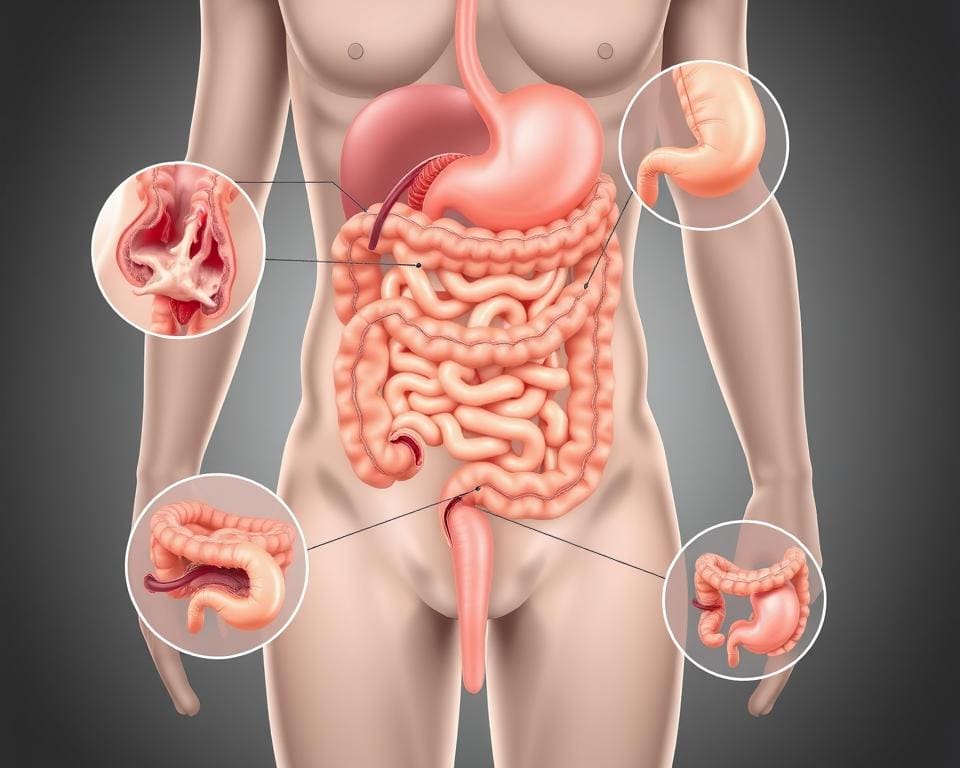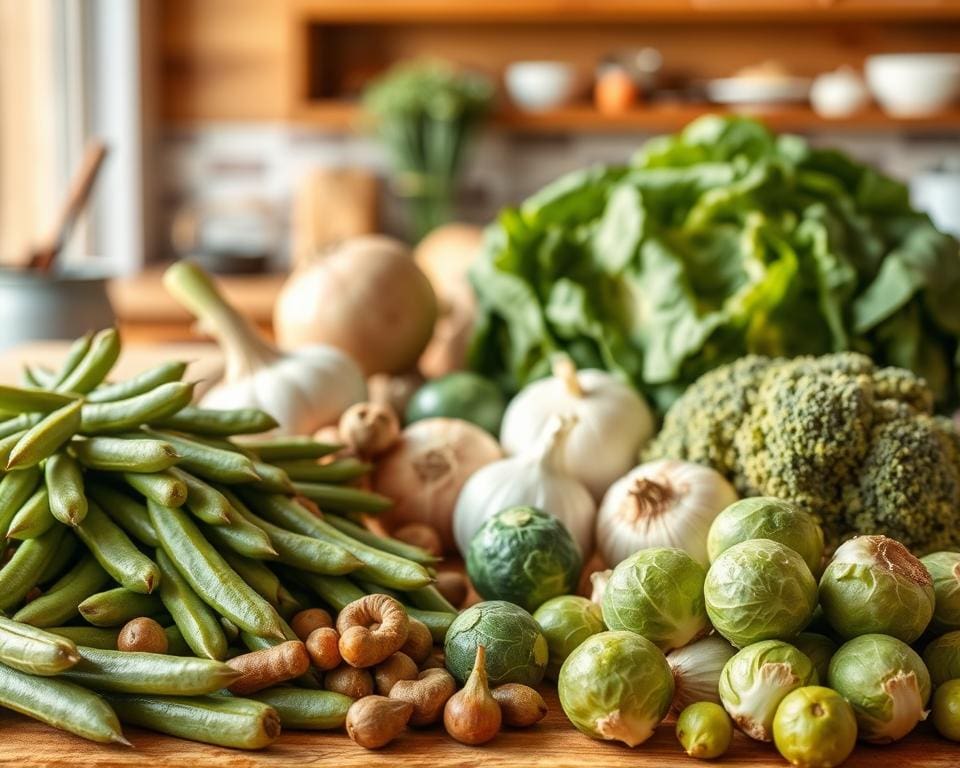Understanding which foods cause flatulence is essential for maintaining digestive health and overall well-being. Excessive gas can lead to discomfort and bloating, often signalling that certain foods may not agree with your system. Recognising the connection between diet and flatulence can empower you to make informed dietary choices, helping to alleviate the challenges associated with gas production. This guide will delve into the foods that cause gas, equipping you with the knowledge you need for a more comfortable digestive experience.
Understanding Flatulence and Its Causes
Flatulence, a natural bodily function, often evokes a mixture of curiosity and embarrassment. It refers to the accumulation of gas in the digestive tract that leads to its expulsion through the rectum. Understanding flatulence involves recognising that while some gas production is normal, excessive gas can lead to discomfort and health concerns. This accumulation of gas is often a result of food digestion, with various dietary choices playing a significant role in the causes of flatulence.
What is Flatulence?
Flatulence occurs when gas builds up in the gastrointestinal tract. This gas can originate from several sources, including air swallowed during eating or drinking and the breakdown of certain foods by bacteria in the intestines. Foods high in fibre, sugar, and carbohydrates commonly contribute to this process, creating the opportunity for an increase in gas production. Understanding the underlying mechanisms of flatulence is essential for managing any discomfort associated with it.
Common Symptoms of Excessive Gas
While some gas is a normal aspect of digestion, excessive gas can present several challenges. Common symptoms of gas include:
- Bloating
- Stomach cramps
- Discomfort after meals
- Changes in bowel movements
- Visible distension of the abdomen
Recognising these symptoms can guide individuals in making dietary adjustments to alleviate discomfort and improve overall digestive health. Addressing the causes of flatulence with informed choices may lead to a more comfortable experience during daily activities.

Which Foods Cause Flatulence
Understanding which foods cause flatulence can help individuals manage uncomfortable symptoms. Certain bloating causing foods contain carbohydrates and sugars that the intestines struggle to break down, leading to increased gas production. Foods that make you gassy typically include beans, lentils, and various vegetables.
Specifically, sugars like raffinose, sucrose, and fructose found in everyday products can become troublesome. For instance, cruciferous vegetables such as broccoli and cabbage often fall into the category of foods that trigger flatulence due to their complex structure. Similarly, dairy products can provoke symptoms in individuals with lactose intolerance, intensifying gas issues.
It’s essential to remember that individual responses to these foods vary widely. Factors like gut health and personal sensitivities can amplify reactions to specific items. Additionally, people may find that certain fruits and grains, especially those rich in fibre, contribute to their gassiness, making it imperative to pay attention to one’s diet.
Legumes and Pulses: A Major Source of Gas
Legumes and pulses are nutritious additions to any diet, yet they can be notorious for causing flatulence. The primary reason behind this discomfort lies in oligosaccharides, a type of carbohydrate found in these foods, which are not easily digested by our bodies. Understanding the types of legumes that cause gas and the methods for preparing legumes for digestion can significantly enhance your dining experience.
Types of Legumes That Cause Bloating
Many common legumes fall into the category of gas producing legumes, leading to unwanted bloating and discomfort. Notable examples include:
- Lentils
- Chickpeas
- Kidney beans
- Pinto beans
- Black beans
Each of these legumes offers numerous health benefits, but they can also contribute to gastrointestinal issues if not prepared properly. Awareness of these legumes that cause gas allows for better meal planning.
Ways to Prepare Legumes for Better Digestion
Proper preparation plays a crucial role in reducing gas production. Here are effective techniques for preparing legumes for digestion:
- Soaking dried legumes overnight can help to break down oligosaccharides.
- Cooking with digestive aids such as kombu, a type of seaweed, can further enhance digestibility.
- Opting for sprouted legumes can increase their nutritional value and reduce gas.
Implementing these methods not only helps with gas reduction but also maximizes the health benefits of legumes, making them a delightful and nutritious choice for all.
Dairy Products: Lactose Intolerance and Flatulence
Dairy products often bring joy to many palates, but for those with lactose intolerance, they can be the source of discomfort and excessive gas. Individuals with this condition struggle to digest lactose, a sugar found in milk, cheese, and other dairy items. Consuming these products can lead to unpleasant symptoms and bloating.
Which Dairy Foods Lead to Gas?
Some dairy products are more problematic than others for individuals with lactose intolerance. The following items typically result in increased dairy products and gas:
- Milk
- Cream
- Soft cheeses (e.g., ricotta and cream cheese)
- Ice cream
- Full-fat yoghurts
Those sensitive to lactose often experience bloating and discomfort after consuming these items, making it important to identify and moderate their intake accordingly.
Alternatives to Dairy for Sensitive Stomachs
Fortunately, a variety of dairy alternatives exist that can offer a similar taste and texture without the associated digestive distress. Consider these options:
- Almond milk
- Soy milk
- Coconut milk
- Hard cheeses (such as cheddar and parmesan)
- Lactose-free yoghurts
Incorporating these dairy alternatives allows individuals to enjoy creamy textures and delightful flavours without the worry of dairy products and gas affecting their comfort. Embracing these substitutes can lead to tasty meals and snacks without sacrificing well-being.
Cruciferous Vegetables and Their Gas-Producing Properties
Cruciferous vegetables play a vital role in a balanced diet but can also contribute to gas production. These gas producing vegetables, such as broccoli, cauliflower, and Brussels sprouts, contain high levels of sulphur compounds and fibre, both of which can lead to an increase in flatulence when consumed.
Popular Cruciferous Vegetables to Watch Out For
- Broccoli
- Cauliflower
- Brussels sprouts
- Cabbage
- Kale
Each of these vegetables offers remarkable nutritional benefits. They are rich in vitamins and antioxidants but can also be troublesome for digestion due to their gas producing properties.
Cooking Methods That Can Reduce Gas
Effective cooking to reduce gas is essential for enjoying these nutritious additions to your meals. Techniques such as steaming, boiling, or sautéing help break down the complex sugars and sulphur compounds responsible for gas formation. These methods can significantly improve digestibility without sacrificing nutrition.
High-Fibre Foods: Balancing Benefits and Gas Production
High-fibre foods serve as a cornerstone of a healthy diet, delivering numerous benefits of fibre that include improved digestion and enhanced satiety. Foods such as whole grains, fruits, and vegetables provide essential nutrients and promote gut health. Despite these advantages, rapid increases in fibre intake can trigger uncomfortable high-fibre foods and gas, leaving many individuals unsure of how to balance their dietary choices.
Particularly, beans, lentils, and certain vegetables are known for being foods that lead to excessive gas. While these items are rich in fibre and can aid digestion, introducing them into one’s diet too quickly may result in bloating and discomfort. It is advisable to gradually incorporate these foods, allowing the digestive system to adjust. Opting for less problematic options, such as cooked carrots or zucchini, can also help mitigate gas production when increasing fibre intake.
Ultimately, enjoying the benefits of fibre while managing digestive comfort requires thoughtful choices. Staying well-hydrated and consuming a variety of high-fibre foods can synergistically support digestive health, providing nourishment without the unwanted side effects.
Carbonated Drinks: A Hidden Cause of Excessive Gas
Many people enjoy sipping carbonated drinks for their refreshing qualities and unique taste. Yet, these fizzy beverages come with a downside, particularly for those who experience digestive discomfort. The carbonation process can trap gas in the stomach, contributing to the phenomenon where fizzy drinks cause bloating and discomfort.
Understanding How Bubbles Contribute to Flatulence
The bubbles in carbonated drinks and gas can lead to a build-up of pressure in the gastrointestinal tract. When consumed, the carbon dioxide gas released may result in an uncomfortable feeling of fullness. This discomfort often leads to excessive gassiness, making it clear how carbonated drinks engage in a different kind of digestion process. Popular options like cola, sparkling waters, and flavoured sodas often exacerbate these issues, turning a simple refreshment into a source of unease.
Alternative Beverages for a Comfortable Gut
Fortunately, alternatives to carbonated drinks exist that can provide a satisfying choice without the risks of bloating. Consider herbal teas, which can soothe the digestive system, or still water infused with fruits for a refreshing flavour without the unwanted gas. Other exemplary choices include natural fruit juices or coconut water, offering taste without the fizzy complications. Embracing these alternatives can lead to a happier digestive experience while still enjoying delicious flavours.
Foods that Trigger Flatulence in Different Individuals
Each person experiences gas differently, as individual triggers for gas can vary significantly. Factors such as the diversity of one’s gut microbiome, specific food intolerances, and prior digestive health play crucial roles in determining how certain foods affect us. This variability means that while a particular food may cause flatulence for one person, it might not produce the same result in another.
Many foods that cause flatulence variably include legumes, dairy products, and certain vegetables. For example, some individuals may find that chickpeas lead to discomfort, while others can consume them without any issues. This highlights the importance of personalising diet based on personal experiences and observations.
Tracking one’s reaction to various foods can provide invaluable insight. Keeping a food journal allows individuals to identify and manage their unique triggers. Over time, a tailored approach to eating can lead to a more comfortable digestive experience, allowing people to enjoy their meals without the burden of gas.
Managing Flatulence: Foods to Avoid for a More Comfortable Digestive Experience
In the quest for digestive comfort, understanding what foods to avoid for flatulence is paramount. By steering clear of certain ingredients, individuals can significantly reduce bloating and discomfort associated with excessive gas. Key culprits include legumes, cruciferous vegetables, and dairy products, all of which can contribute to an increase in intestinal gas. Recognising these foods can empower you to make better dietary choices.
Additionally, practising portion control and mindful eating can further aid in managing excessive gas. Eating smaller meals throughout the day allows the digestive system to process food more efficiently, minimising the likelihood of gas build-up. Staying properly hydrated also plays a critical role, as water can help to facilitate digestion and reduce bloating through diet.
It’s essential to remember that everyone’s digestive system is unique, and what triggers flatulence in one person may not affect another in the same way. By being attentive to your body’s reactions and making informed decisions about your diet, you can cultivate a more comfortable digestive experience while still enjoying a varied range of foods.









